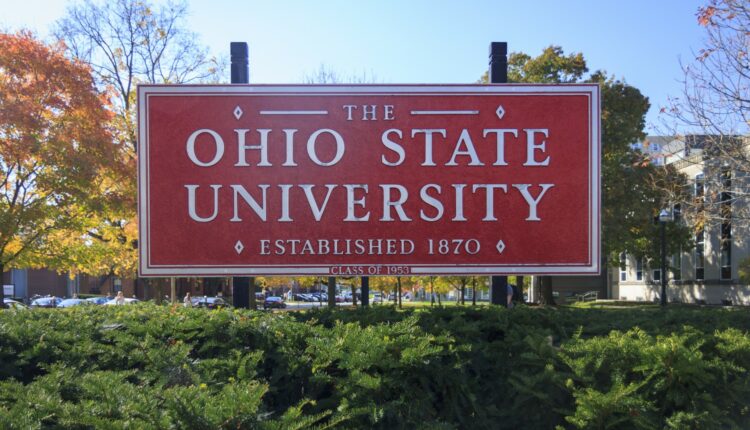Ohio State University: Ohio 5-OSU SURE program connects liberal arts students with research experiences
Last month, students from a cluster of small private colleges known as the Ohio 5 schools presented research they had completed at The Ohio State University during the OSU SURE program.
Ohio 5-OSU SURE, or Summer Undergraduate Research Experience, allows students from the College of Wooster, Denison University, Kenyon College, Oberlin College and Ohio Wesleyan University to participate in summer-long research projects at Ohio State. The colleges collaborate through an organization known as the Five Colleges of Ohio, or Ohio 5 for short.
The program benefits the student participants and Ohio State, said Thomas J. Magliery, faculty program co-director and associate professor of chemistry and biochemistry.
“We see things like the ability to give great oral presentations, strong writing, because of the liberal arts core at those places,” he said of Ohio 5 students. Meanwhile, the students can experience lab work at a top-tier research institution thanks to “the breadth of what you can have at a place like this.”
“Basically, if you can think of an experiment in those areas we’ve covering here, probably Ohio State has facilities to do it,” he said. “They get to see an R1 institution, they get a preview of what graduate school looks like and what the research process looks like.”
Started in 2018 by Magliery and Amy Ferketich, faculty program co-director and professor of epidemiology in the College of Public Health, OSU SURE began with a handful of students. Since then, it has grown, with 26 students enrolled this year. More than 30 Ohio State professors from six fields participate as well. Students have the chance to work closely with these professors for ten weeks.
Some, like Justice Clark, an Ohio Wesleyan student, continue their work after the program concludes.
“I got a lot of research experience,” said Clark, who completed his second OSU SURE program this year and worked remotely on his research between summers. “I expanded my communication skills: interviewing patients and future participants.”
Like Clark, Daniel Ortiz Sifonte, a Denison University student, plans on continuing his research. He originally wanted to study cancer but instead joined a project that focused on food insecurity during the COVID-19 pandemic.
“I will pursue this long term,” he said. “There’s stuff we didn’t get to, such as looking at how Medicaid has mitigated food insecurity in Ohio. I have personal experience with food insecurity, so this is a topic that’s very close to my heart.”
In addition to research experience, OSU SURE participants also learn about graduate school options and potential career paths. Danaye Nixon, a 2018 participant who is now a data scientist at the University of California San Francisco, remembers meeting with graduate students as one of her favorite program experiences.
“They would give presentations on their research, or we would read papers with them. I appreciated being in touch with someone who’s at that next step,” she said. “You can glean firsthand experience from them.”
These presentations helped Nixon and her cohort understand the diverse options available to them after they earn their undergraduate degrees.
“Five of us are doing different things,” she said, looking at a photo of her program cohort. “Three of them are in graduate school for PhDs.”
Magliery noted that the program’s participants are also diverse.
“All of those schools share Ohio State’s values in terms of diversity and inclusion,” he said. “As a result, we’ve seen a really diverse group, different racial and ethnic backgrounds.”
Ferketich added that because OSU SURE does not have citizenship requirements, like other research programs, there is a large number of international students.
“We have students from European countries but also a lot from low- and middle-income countries,” she said. “For example, we’ve had students from Nepal, Bangladesh, Pakistan, and Vietnam complete the program in the past.”
This type of research experience is invaluable for undergraduate students, both program administrators stressed. The more students who have access to it, the better.
“Even if these students don’t end up at Ohio State, it really is about bridge building and getting to know people at these schools, and then they get to know us,” Ferketich said.
“I want faculty at [Ohio 5 schools] to say to their students, ‘Is Ohio State on your [graduate school] list?’” Magliery said. “I want them to be aware of the opportunities.”

